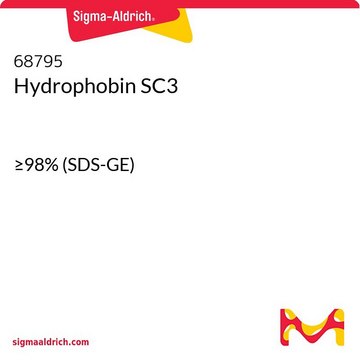PE0220
Plant Hydrophobic Protein Extraction Kit
Suitable for any plant species or tissue
About This Item
Recommended Products
storage temp.
−20°C
General description
Following removal of polyphenolics, tannins, and other interfering substances, ground plant tissue, fresh or frozen, is resuspended in a specially formulated reagent to extract hydrophilic proteins. After sequential extractions of the hydrophilic proteins, the chaotropic reagent is used to extract hydrophobic membrane bound proteins. Plant debris is pelleted by centrifugation and the hydrophobic protein extract is collected. The end result is a qualitative hydrophobic protein sample, ready for downstream proteomic analysis.
Quantity
Signal Word
Warning
Hazard Statements
Precautionary Statements
Hazard Classifications
Acute Tox. 4 Oral - Aquatic Chronic 2 - Carc. 2 - Repr. 2
Storage Class Code
10 - Combustible liquids
Flash Point(F)
185.0 °F
Flash Point(C)
85 °C
Regulatory Listings
Regulatory Listings are mainly provided for chemical products. Only limited information can be provided here for non-chemical products. No entry means none of the components are listed. It is the user’s obligation to ensure the safe and legal use of the product.
PDSCL
Please refer to KIT Component information
PRTR
Please refer to KIT Component information
FSL
Please refer to KIT Component information
ISHL Indicated Name
Please refer to KIT Component information
ISHL Notified Names
Please refer to KIT Component information
Cartagena Act
Please refer to KIT Component information
JAN Code
キットコンポーネントの情報を参照してください
Choose from one of the most recent versions:
Already Own This Product?
Find documentation for the products that you have recently purchased in the Document Library.
Our team of scientists has experience in all areas of research including Life Science, Material Science, Chemical Synthesis, Chromatography, Analytical and many others.
Contact Technical Service







